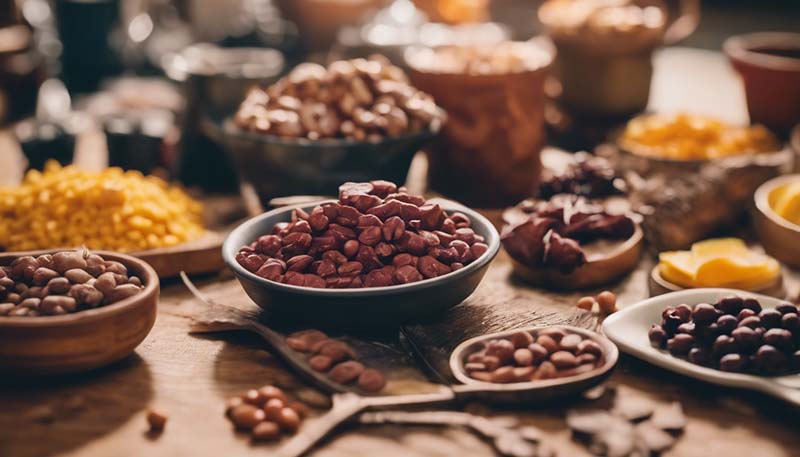Iron-Rich Foods: How to Boost Your Iron Levels
Iron is an essential mineral that plays a vital role in the proper functioning of the human body. It is a key component of hemoglobin, the protein in red blood cells that transports oxygen from the lungs to the rest of the body. Without enough iron, your body can't produce enough healthy oxygen-carrying red blood cells, which can lead to a condition called anemia.
Why is Iron Important?
There are two types of iron:
- Heme iron: This type of iron is found in animal products and is more easily absorbed by the body.
- Non-heme iron: This type of iron is found in plant-based foods and is less easily absorbed by the body.
While both types of iron are important, heme iron is more readily available for your body to use. Non-heme iron, on the other hand, can be enhanced by consuming it with foods that are rich in vitamin C.
Signs and Symptoms of Iron Deficiency
Some common signs and symptoms of iron deficiency include:
- Fatigue or tiredness
- Pale skin
- Irregular heartbeat
- Cravings for non-food items (pica)
- Weakness or feeling faint
Iron-Rich Foods to Include in Your Diet
1. Red Meat
Red meat, such as beef, lamb, and pork, is one of the best sources of heme iron. A 3-ounce serving of beef liver, for example, contains over 5 milligrams (mg) of iron.
2. Poultry
Chicken and turkey are good sources of heme iron, with a 3-ounce serving containing around 0.8 mg of iron.
3. Fish
Fatty fish, such as salmon and tuna, are good sources of iron, with a 3-ounce serving of salmon containing around 1 mg of iron.
4. Legumes
Legumes, such as beans, lentils, and chickpeas, are excellent sources of non-heme iron. A cup of cooked lentils, for example, contains around 6 mg of iron.
5. Fortified Cereals
Many breakfast cereals are fortified with iron, so check the label to see if it's a good source of iron. A bowl of fortified cereal can contain around 45 mg of iron.
6. Leafy Green Vegetables
Leafy green vegetables, such as spinach and kale, are good sources of non-heme iron. A cup of cooked spinach contains around 6 mg of iron.
7. Nuts and Seeds
Nuts and seeds, such as almonds, pistachios, and pumpkin seeds, are good sources of non-heme iron. A quarter-cup of pumpkin seeds contains around 4 mg of iron.
8. Dried Fruit
Dried fruit, such as raisins, apricots, and dates, are good sources of non-heme iron. A half-cup of dried apricots contains around 2 mg of iron.
9. Tofu and Edamame
Tofu and edamame (young soybeans) are good sources of non-heme iron for vegetarians and vegans. A half-cup of edamame contains around 3 mg of iron.
10. Dark Chocolate
Dark chocolate is a surprising source of iron, with a 1-ounce serving containing around 3 mg of iron.
Tips for Boosting Iron Absorption
Here are some tips to help boost your iron absorption:
- Consume vitamin C-rich foods, such as oranges, strawberries, and bell peppers, with iron-rich foods to enhance absorption.
- Avoid drinking coffee or tea with meals, as they can inhibit iron absorption.
- Avoid taking iron supplements on an empty stomach, as this can cause stomach upset.
- Speak with your doctor before taking iron supplements, as excessive iron intake can be harmful.
Conclusion

Iron is an essential mineral for overall health and well-being. By incorporating iron-rich foods into your diet and following some simple tips to boost absorption, you can help ensure that your body gets the iron it needs to function properly.
Note: If you suspect that you have an iron deficiency, it's important to speak with your doctor or a registered dietitian before making any major changes to your diet.
Leave a Comment